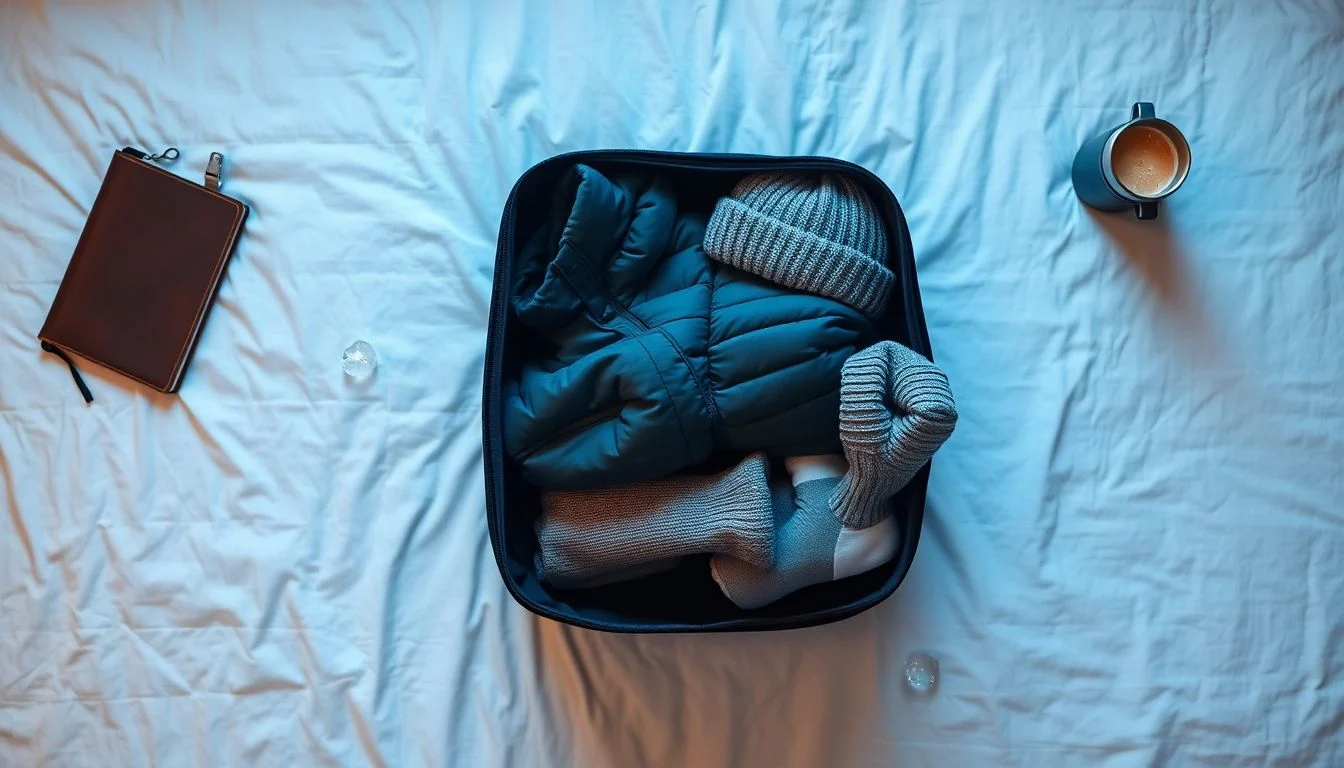
Packing for Greenland: Greenland’s stunning landscapes require thoughtful packing for its extreme climate. This guide emphasizes the importance of understanding temperature variations, the layering system for clothing, and essential gear. Proper preparation includes insulated attire, navigation tools, and a first-aid kit. Smart packing strategies further enhance comfort and convenience for an unforgettable adventure.
Understanding Greenland’s Climate: What to Expect
Greenland’s climate varies a lot. Temperatures change with the seasons, and weather can be unpredictable. Being ready for anything is key.
Average Temperatures and Seasonal Differences
Winter in Greenland is seriously cold. Expect average temps from -20°F to 10°F (-29°C to -12°C). Summer is milder, with averages between 30°F and 50°F (-1°C to 10°C). But even then, it’s still chilly. The shoulder seasons (spring and fall) are in between, but can be very windy.
Microclimates and Local Weather Conditions
Greenland’s landscape creates different microclimates. Fjords can block wind, while mountains cause sudden changes. Coastal areas are often wetter than inland areas. Check the local forecast often!
Key Weather Factors: Wind, Precipitation, and Sunlight
Wind chill makes it feel way colder than the actual temp. Snow is common, but rain and sleet can happen too. Daylight changes a lot. In winter, there are only a few hours of sunlight. Summer brings almost 24 hours of daylight.
The Layering System: Your First Line of Defense
Layering is how you stay warm. It lets you adjust to changing conditions. Plus, its flexible.
Base Layers: Moisture-Wicking Fabrics
Base layers are worn next to your skin. Choose merino wool or synthetic fabrics. They pull sweat away, keeping you dry. Avoid cotton – it stays wet and makes you colder.
Mid Layers: Insulation for Warmth
Mid layers add warmth. Fleece, down, and synthetic insulation are great choices. Fleece is good for everyday wear. Down is super warm but loses its warmth when wet. Synthetics stay warm even when damp.
Outer Layers: Protection from Wind and Water
Outer layers shield you from wind and water. Get a waterproof and windproof jacket and pants. Look for hoods, gaiters (ankle coverings), and adjustable cuffs. These features keep the elements out.
Essential Clothing Items: Building Your Wardrobe
Now, let’s build your Greenland wardrobe. These clothing items will keep you cozy.
Headwear: Hats, Beanies, and Balaclavas
A warm hat is a must. Make sure it covers your ears. A balaclava is great for extreme cold. It protects your face and neck from the wind.
Handwear: Gloves and Mittens
Mittens are warmer than gloves. They keep your fingers together for better heat. Get waterproof and insulated mittens or gloves with liners. Liners add extra warmth and let you use your hands without exposing them to the cold.
Footwear: Insulated Boots and Socks
Waterproof and insulated boots are essential. Choose boots with good traction for icy surfaces. Wear moisture-wicking socks to keep your feet dry. Layer socks for added warmth. Wool socks are a great choice.
Core: Insulated Parka
An insulated parka is your main defense against the cold. Look for one with a high fill power (down) or quality synthetic insulation. Make sure it’s water-resistant and windproof. A good parka makes a huge difference.
Gear and Accessories: Beyond Clothing
Don’t forget these important extras. They add to your comfort and safety.
Backpacks: Choosing the Right Size and Features
A backpack is handy for day trips. Pick one with enough space for your gear. Waterproof covers are a plus. Look for comfy straps and a supportive hip belt.
Sunglasses and Sunscreen: Protecting Yourself from UV Rays
The sun reflects off the snow and ice. This makes UV rays intense, even when it’s cold. Wear sunglasses with UV protection. Use high SPF sunscreen on your face and exposed skin.
Navigation Tools: Maps, Compasses, and GPS Devices
Exploring Greenland requires reliable navigation. Bring topographic maps, a compass, and a GPS device. Know how to use them. It can be easy to get lost in remote areas.
First-Aid Kit: Be Prepared for Emergencies
Pack a comprehensive first-aid kit. Include bandages, pain relievers, antiseptic wipes, and blister treatment. Add any personal medications. It’s always better to be safe than sorry.
Packing Strategies and Tips: Maximize Space and Efficiency
Packing smart saves space and makes travel easier. Here are some tips.
Rolling vs. Folding: Which Method is Best?
Rolling clothes saves space. It also helps prevent wrinkles. Folding is good for items that wrinkle easily. Try both and see what works best for you.
Using Packing Cubes: Organize Your Gear
Packing cubes keep your stuff organized. They separate clothing types. This makes finding things easier. They also compress items, saving space.
Weight Distribution: Pack Heavier Items Strategically
When packing a backpack, put heavier items closer to your back. This improves balance. Distribute weight evenly to avoid strain.
Leave Room for Souvenirs
Don’t fill your bag completely. Leave some room for souvenirs. You’ll want to bring home something special from Greenland.
Conclusion
Packing for Greenland is all about being prepared. Understand the climate. Use the layering system. Bring essential gear. Pack smart. A well-planned packing strategy makes your trip comfy and safe. Start planning your Greenland adventure today! It’s an experience you’ll never forget.


Leave a Reply
You must be logged in to post a comment.